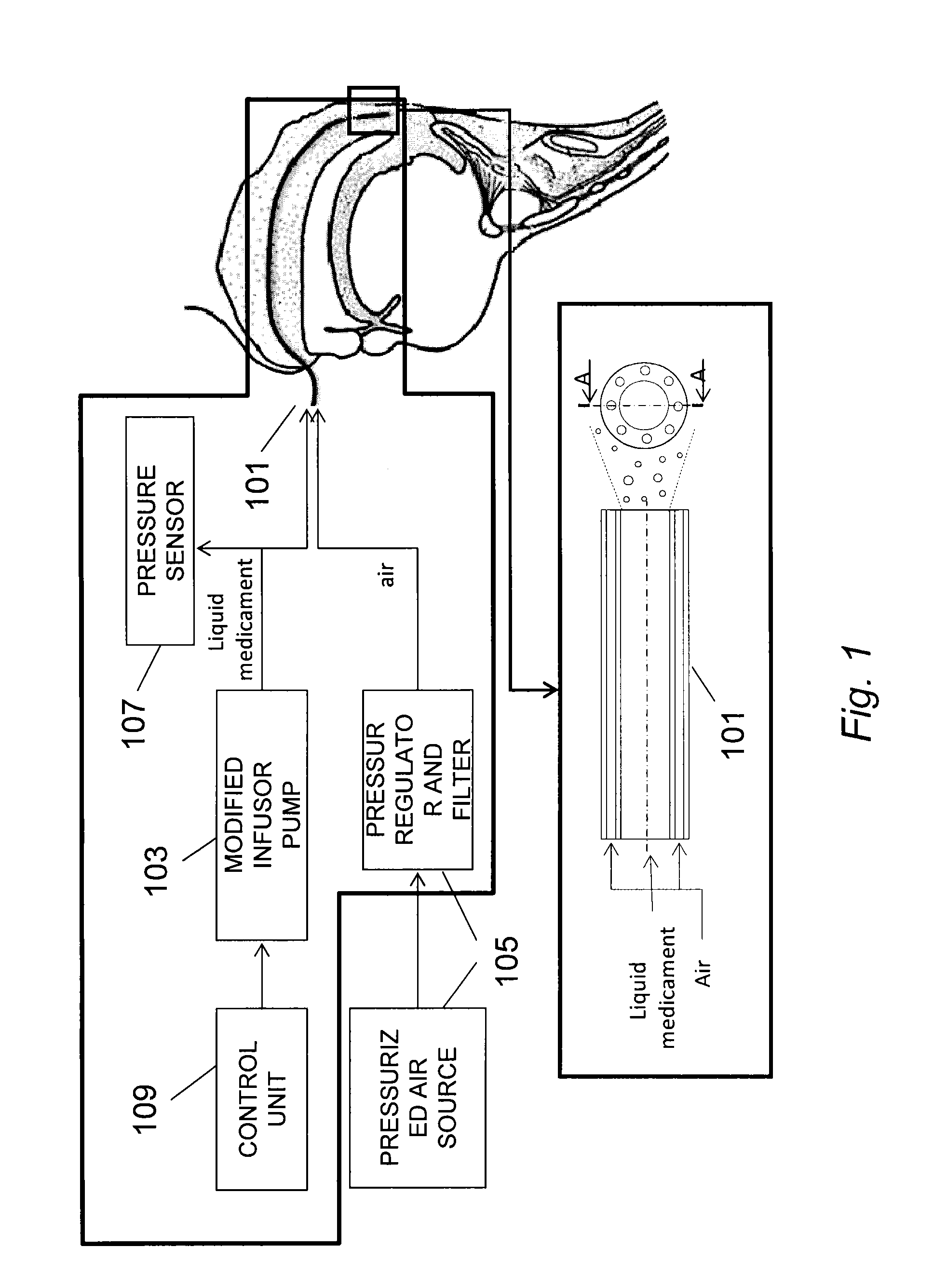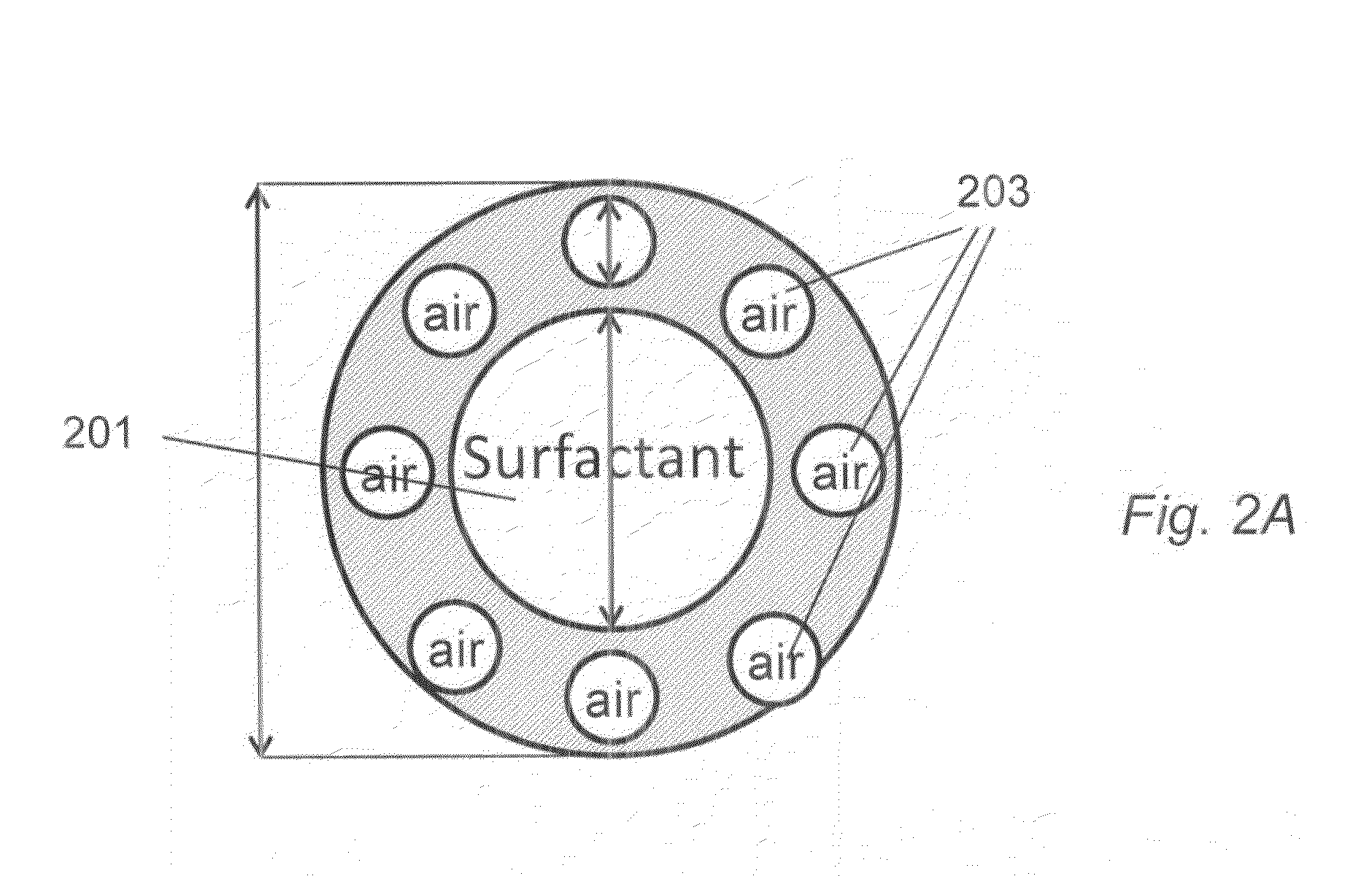Method and system for the administration of a pulmonary surfactant by atomization
a pulmonary surfactant and atomization technology, applied in the field of retropharyngeal instillation of medicaments, can solve the problems of difficult comparison amongst patients, difficulty in making a proper comparison, and effectiveness of nebulization approaches, and achieves the effects of convenient and fast delivery of atomized particles, easy manufacturing, and gentle atomization process
- Summary
- Abstract
- Description
- Claims
- Application Information
AI Technical Summary
Benefits of technology
Problems solved by technology
Method used
Image
Examples
examples
[0093]In vivo efficacy of atomized surfactant (in this example poractant alfa, as defined above) was evaluated in preterm newborn rabbits at the 27th day of gestation (term=31±1 days). The model chosen closely resembles the conditions of premature babies affected by RDS in that the lungs of these animals are not yet able to produce their own surfactant, but can warrant gas exchange so that they can expand in response to exogenous surfactant administration.
[0094]Treatments were intratracheally given at 2 ml / kg volume, corresponding to 160 mg / kg dose. Foetuses, paralyzed with pancuronium bromide (0.02 mg i.p.), were then placed in the plethysmograph system at 37° C. and ventilated with pure oxygen at constant pressure (frequency 40 / minute, inspiration / expiration ratio 60 / 40). No positive end-expiratory pressure (PEEP) was applied. An “opening” pressure of 35 cmH2O was first applied for 1 minute to overcome initial resistance due to capillarity in finer conducting airways. It was then ...
PUM
 Login to View More
Login to View More Abstract
Description
Claims
Application Information
 Login to View More
Login to View More - R&D
- Intellectual Property
- Life Sciences
- Materials
- Tech Scout
- Unparalleled Data Quality
- Higher Quality Content
- 60% Fewer Hallucinations
Browse by: Latest US Patents, China's latest patents, Technical Efficacy Thesaurus, Application Domain, Technology Topic, Popular Technical Reports.
© 2025 PatSnap. All rights reserved.Legal|Privacy policy|Modern Slavery Act Transparency Statement|Sitemap|About US| Contact US: help@patsnap.com



